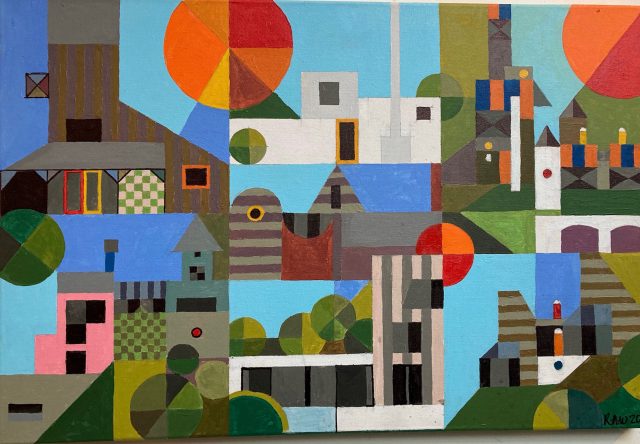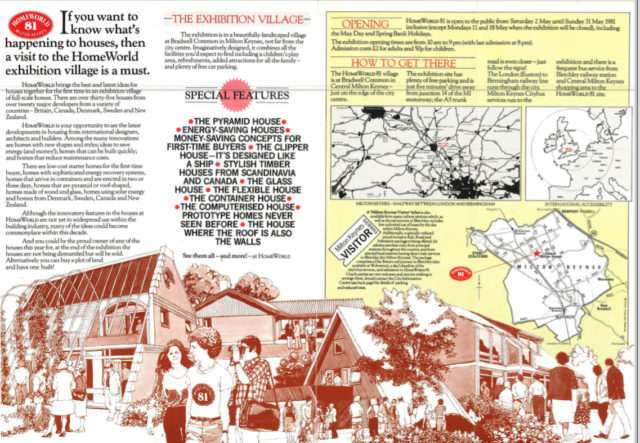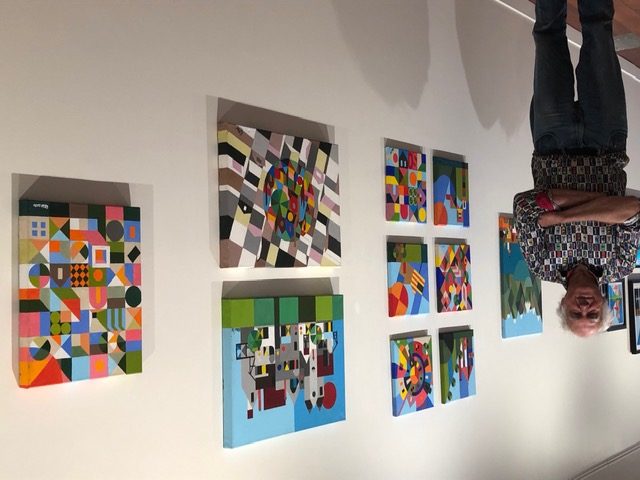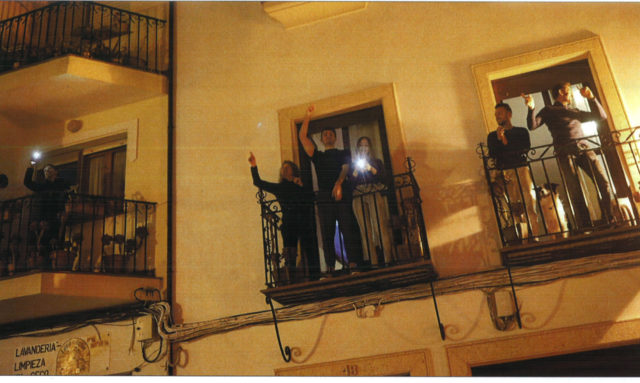RIP Sir Michael Fowler: 1930-2022
Much has been made this week of the drive and vision former Wellington mayor Michael Fowler had as he oversaw major change to the Wellington CBD.
But when I heard that Michael had died this week, I remember him as a a great boss who I learnt so much from and a lifelong friend and mentor.
As an architectural student in the 60’s. I sought experience by working Christmas holidays with Sir Miles Warren in Christchurch, Rodney Smith in Hamilton and Calder Fowler and Styles in Wellington.
When I graduated in 1967 from Auckland University, there was a recession on the building industry, and I could not find a job in Auckland. I rang Michael, who said get your bottom down here as soon as possible – we can’t cope with the work we have.
It was the architectural equivalent of being thrown at the deep end. He gave me the Wellington Club, the Union Steamship Company, a shop and a church in Taumaranui, various houses and the Salvation Army in Lower Hutt to design.
The Wellington Club was to me to be a grand residence on the Terrace to nurture ‘after hours’ the business men who worked by day in their faceless offices The Stage one building was to be the Club’s home, with Stage 2 being a revenue generating high rise . Unfortunately along came the Ministry of Works with the Shell Gully motorway and the rear site disappeared.
The low rise Club was thus marooned in an uneconomic situation, with huge annual rates, so its fate was sealed a few years too early. We tried with the Architectural Centre to get the building listed, but were told by the Historic Places Trust that the building was not old enough to list.
Firmness, commodity and delight
I recently completed an academic essay for Curtin University in Australia, on the subject of ‘Delight in Architecture’. At 5000 words it is far too long for a blog, but long but here is a brief synopsis of what I wrote.
The essay had only a limited intention to articulate design principles or develop any theories of design. Any embellishment to my stories which may cause slight to a person or persons, living or dead, was unintentional.
Architecture follows the adage that ‘experience is a hard teacher. The test comes first and is then followed by the lesson’ People generally prefer beauty to ugliness and pleasure to pain.
I think ugliness can be avoided.
There are a few touchstones. Roman Artist Vitruvius who wrote at the turn of the millennium that ‘buildings should possess firmitas, utilitas and venustas‘ – firmness, commodity, and delight’
Delight references beauty, pleasure and surprise. It is understandable that Vitruvius’s third pillar is often missing. After all, achieving firmness is legislated (although some buildings fail this pillar). Utilitas comes from the nature of the project and the client. Delight, being so subjective is much harder to define and achieve.
Richard Buckminster Fuller spoke of this in the 1950s when he said: ‘When I am working on a problem I never think about beauty, but when I have finished, if the solution is not beautiful, then it is wrong.’
We are told by geographers that more people are living in urban environments, than rural, for the first time in history. In New Zealand, our Government has recognised the unsustainable folly of sprawl and are moving toward tightening up our built environments. The unimaginative fearful are saying this will ruin our suburbs. Nonsense. A city is a library of buildings. All sizes and styles. This produces a rich built environment. By ‘personalising’ buildings, surprise and joy can arise.
Standardisation tends to be joyless. The best examples of beautiful individual and clusters of heritage buildings should be protected, just like old books in a library. But there is plenty of scope for ‘new heritage’.
I have a story about a woman who visited our office a few years ago. She had heard we designed houses. After about 10 minutes silently looking closely at our brag walls and our photo albums she finally said, ‘Mr.Walker, do you design anything normal?’ An interesting encounter, not because she didn’t like our houses, but her concern about being ‘different’. This fear of being different intrigues me. We are not a nation of sheep are we?
People are attracted to and visit within our world to see and marvel at different buildings. The Taj Mahal, the Guggenheim in Bilbao, Frank Lloyd Wright’s Houses, and the Empire State building, for example. The glass domed German Parliament building in Berlin, known as The Reichstag, has more visitors annually than the whole of New Zealand.
We need not fear colour. Why seas of grey roofs in suburbia? Acousticians like beautiful sounding interiors. ‘Agreeable not discordant‘ wrote Sir Harold Marshall .
Billy Connolly, the Scottish comedian,or storyteller, as he would prefer to be called, spoke frequently about how we know nature is beautiful. The mountains, the coastlines, the trees and the lakes.
‘What I am most interested in is how we humans add, rather than detract from this beauty’, he says. He appeared in his ‘World Tour’ series atop the Opera House in Sydney and the Forth Bridge in Glasgow to make his point.
I thoroughly embrace the concept of expressive architecture. Without delight, we risk depression and alienation.
It’s our job as architects to understand what Vitruvius said.
Homeworld ’81: 40 years on
I’ve had a great trip down memory lane recently thinking about Homeworld ‘81
A few weeks ago I was contacted by a British film maker who was making a film to mark the 40th anniversary of this innovatove housing exhibition. I jumped at the chance – mostly because Homeworld ’81 was somehting I had been discussing with architectural colleagues in relation to the current affordable housing crisis in New Zealand.
Watching ‘Homeworld ’81: The Legacy and Relevance‘ has further convinced me that it wold be great to have a more contemporary version in New Zealand. The film is 44 minutes long, so if you don’t have that much time, allow me to share my memories with you. (Or if you want to watch the section devoted to New Zealand it’s at 14min).
I was invited by the NZ High Commission to build a demonstration house at an international exhibition in Milton Keynes in North Buckinghamshire.
The last of the post war New Towns, Milton Keynes, a city the size of Wellington, decided to hold the exhibition under the slogan: ‘It’s what’s happening to houses’. It ran from 2- 31 May 1981 and attracted 150,000 visitors.
The brochure stated: ‘Homeworld brings together the best and latest idea for houses together for the first time in exhibition village of full scale homes.’ No planning or Building Consents were required as the organisers didn’t want regulations to stifle innovation.
The art of the architect
It’s a year since the country went into level 4 lockdown and the anniversary has provided a chance to focus on how it affected the country.
My marking of the anniversary came a couple of weeks early when I held my first ever art exhibition – the Art of the Architect. It was during last year’s level 4 lockdown that I discovered a new passion/obsession for painting and the exhbition was a great milestone.
ARCHITECTURE POST COVID
Like most , I have been self-isolating which is pleasantly distractionless and leads to thinking not possible in the familiar rat race.
Our collective eradication efforts, together with the development of suitable vaccines ,will eradicate this incredibly contagious little enemy in the not too distant future.
It seems certain that post-Covid social behaviour will be kinder, cleaner ,more people focussed, less selfish and supportive. And more caring about older people. Strange as we feel now, we people of planet earth,are soldiers in a war like no other .
I suspect that in future New Zealanders will be buying local, staying local, and reinforcing the strengths of our immediate neighbourhoods. Hopefully our institutions will we be less beaurocratic. We need to remove useless job activities that make our unemployment figures look good, but are unsustainably non-productive. To re-prioritise our efforts to be more contributory to societies real needs, is a good objective.
Because I am not qualified to discuss changes in social behaviour, I am limiting my thoughts to what may happen to architecture. I would be happy if other architects could express their views.
There has already been some disturbing reactions to long term future architecture.
I read a recent article in a German architectural journal , suggesting that post-Covid apartment buildings should be replaced with individual houses ,with no virus spreadable common areas, stairways and lifts.
In my view this is wrong. To be consistent, paranoia of the ‘danger’ of public space would have to also apply to buses, trains and other forms of public transport. The safe bubble of a private car is preferred . The negative environmental and infrastructural effects of sprawled suburbs serviced only by cars (buses don’t work in low density environments), is well documented.





